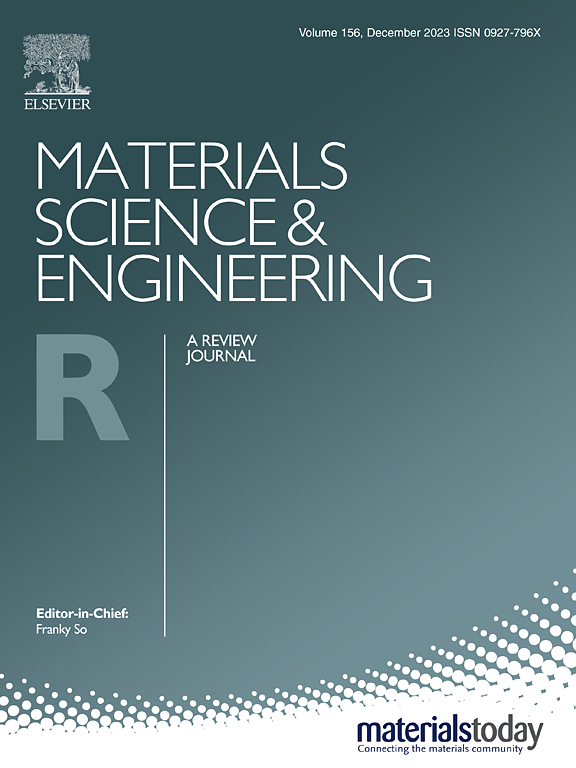Exploring PLA/TPU blends in pellet-based printing for multifunctional applications: Blending and interfacial properties
IF 31.6
1区 材料科学
Q1 MATERIALS SCIENCE, MULTIDISCIPLINARY
引用次数: 0
Abstract
Multi-material pellet 3D printing using fused granulated fabrication (FGF) is gaining attention for its ability to create multifunctional models. This is driven by the extensive range of commercial polymer pellets and additives available, enabling prints with tuneable mechanical properties and functionality beyond aesthetics. Despite its potential, limited research exists on interphase properties, such as the influence of polymer ratios on interphase strength and bonding. In this study, we used multi-material FGF to 3D print polymers with varying hardness and stiffness in a single print. By blending polylactic acid (PLA) and thermoplastic polyurethane (TPU), we explored in-situ polymer blending to achieve multifunctionality. Five PLA/TPU ratios were investigated, with optimized 3D printing parameters. The mechanical and thermal properties of the resultant blends were analyzed. Notably, toughness peaked at an infill density of 80 % and a blend composition of 75 % PLA/25 % TPU. Shear strength at the interface improved by ∼320 % with a gradual transition between PLA and TPU (5.76 MPa) compared to a discrete interface (1.79 MPa). PLA-dominant blends exhibited superior compressive strength due to higher rigidity. Adding carbon black to TPU (cTPU) enhanced its electrical properties, enabling heating functionality as confirmed by thermal imaging. We also demonstrated the stimuli-responsive effect of PLA/TPU blends, showing that the hardness of an insole could be controlled through Joule heating. To illustrate practical applications, we designed a multi-functional insole integrating the optimal PLA/TPU blend with a cTPU heating layer. These findings highlight the potential of FGF for creating multi-material objects with tailored properties, paving the way for advancements in multifunctional additive manufacturing.
探索PLA/TPU共混物在基于颗粒的多功能打印中的应用:共混和界面特性
使用熔融颗粒制造(FGF)的多材料颗粒3D打印因其创建多功能模型的能力而受到关注。这是由广泛的商业聚合物颗粒和添加剂驱动的,使打印具有可调的机械性能和功能,超越美学。尽管其潜力巨大,但对间相性质的研究有限,例如聚合物比例对间相强度和键合的影响。在这项研究中,我们使用多材料FGF在单次打印中打印具有不同硬度和刚度的聚合物。通过共混聚乳酸(PLA)和热塑性聚氨酯(TPU),我们探索了原位共混聚合物的多功能性。研究了五种PLA/TPU比率,并优化了3D打印参数。分析了共混物的力学性能和热性能。值得注意的是,当填充密度为80 %和共混成分为75 % PLA/25 % TPU时,韧性达到峰值。与离散界面(1.79 MPa)相比,在PLA和TPU之间逐渐过渡(5.76 MPa),界面处的剪切强度提高了~ 320 %。pla占主导地位的共混物由于较高的刚度而表现出优异的抗压强度。在TPU (cTPU)中添加炭黑增强了其电气性能,并通过热成像证实了加热功能。我们还展示了PLA/TPU共混物的刺激响应效应,表明可以通过焦耳加热来控制鞋垫的硬度。为了说明实际应用,我们设计了一种多功能鞋垫,将最佳PLA/TPU共混物与cTPU加热层结合在一起。这些发现突出了FGF在创造具有定制属性的多材料物体方面的潜力,为多功能增材制造的进步铺平了道路。
本文章由计算机程序翻译,如有差异,请以英文原文为准。
求助全文
约1分钟内获得全文
求助全文
来源期刊

Materials Science and Engineering: R: Reports
工程技术-材料科学:综合
CiteScore
60.50
自引率
0.30%
发文量
19
审稿时长
34 days
期刊介绍:
Materials Science & Engineering R: Reports is a journal that covers a wide range of topics in the field of materials science and engineering. It publishes both experimental and theoretical research papers, providing background information and critical assessments on various topics. The journal aims to publish high-quality and novel research papers and reviews.
The subject areas covered by the journal include Materials Science (General), Electronic Materials, Optical Materials, and Magnetic Materials. In addition to regular issues, the journal also publishes special issues on key themes in the field of materials science, including Energy Materials, Materials for Health, Materials Discovery, Innovation for High Value Manufacturing, and Sustainable Materials development.
 求助内容:
求助内容: 应助结果提醒方式:
应助结果提醒方式:


